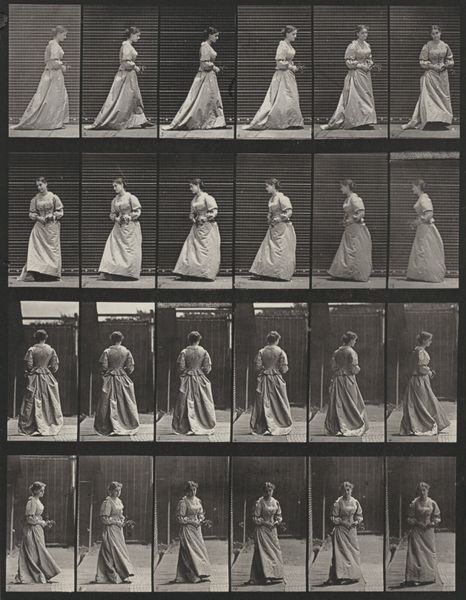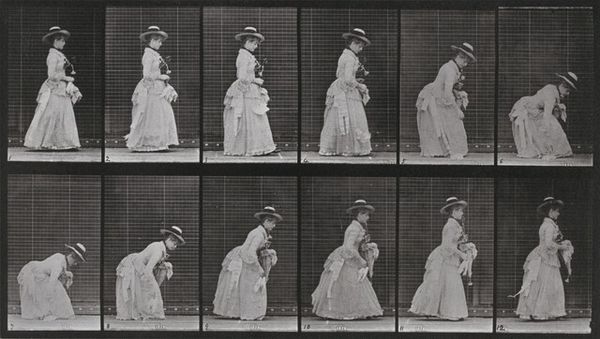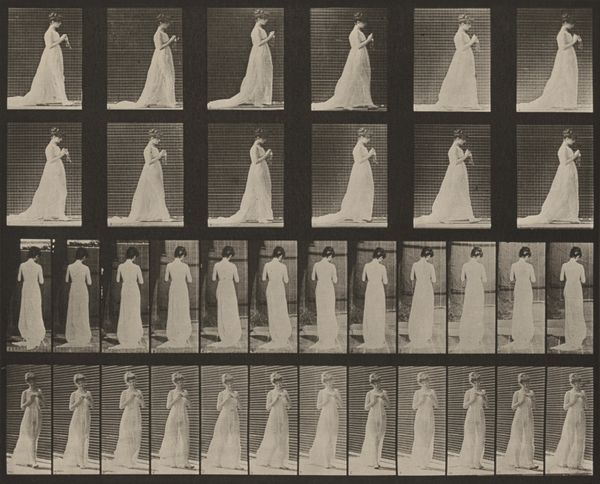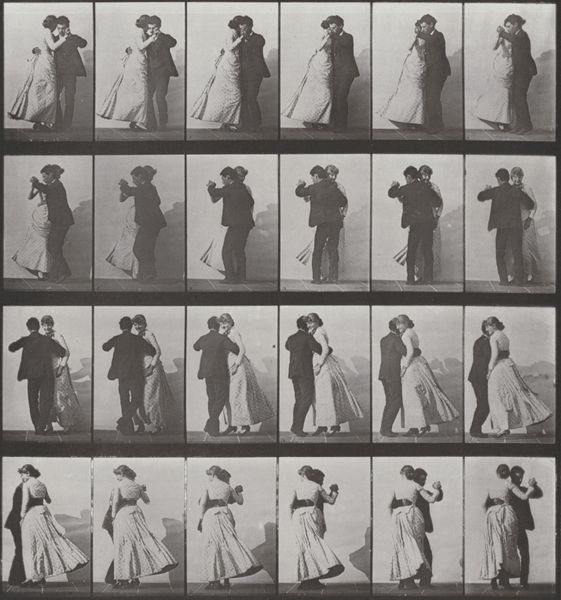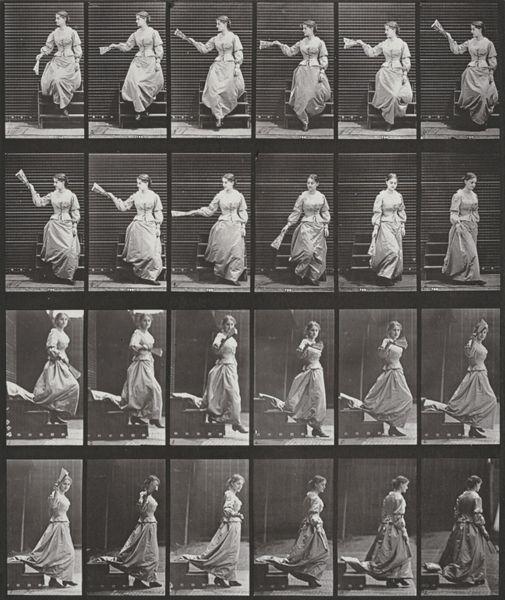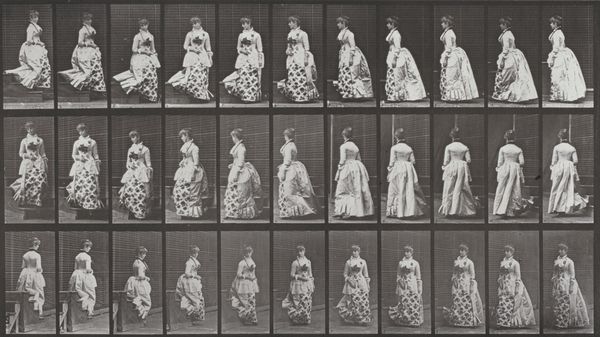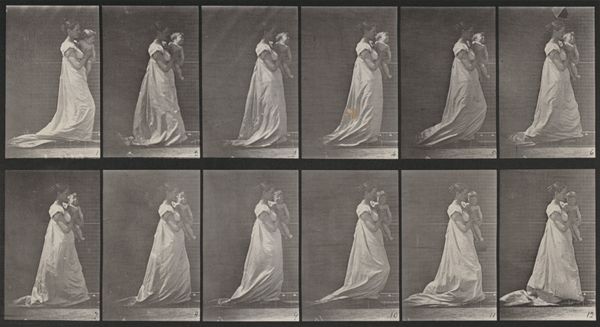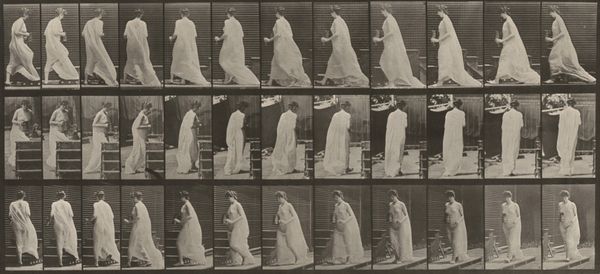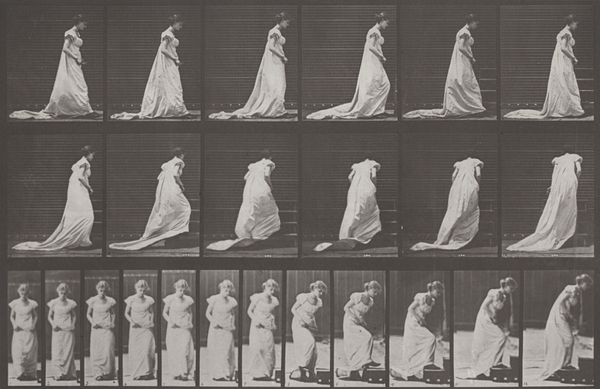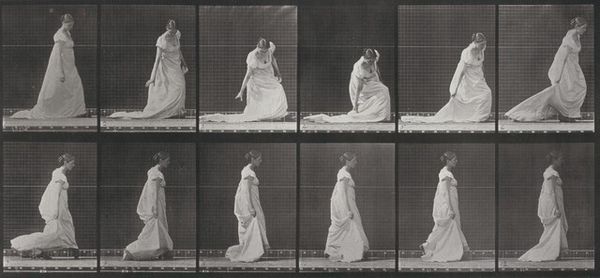
Plate Number 45. Two women walking, meeting and partly turning 1887
0:00
0:00
print, photography, gelatin-silver-print
#
desaturated
#
narrative-art
#
muted colour palette
# print
#
impressionism
#
photography
#
dark shape
#
gelatin-silver-print
#
monochrome photography
Dimensions: image: 22 × 34.2 cm (8 11/16 × 13 7/16 in.) sheet: 48.2 × 61.2 cm (19 × 24 1/8 in.)
Copyright: National Gallery of Art: CC0 1.0
Curator: I see this piece as quite dreamlike; it captures a fleeting moment, almost as if glimpsed through time. Editor: You’ve intuited the magic of this work. What we’re looking at is “Plate Number 45. Two women walking, meeting and partly turning,” a gelatin-silver print made in 1887 by Eadweard Muybridge. He's most famous for his groundbreaking work in capturing motion. Curator: Yes, that temporal sense makes it so striking. It evokes a very particular mood in monochrome. The repetition, almost like frames from a film reel, feels both scientific and strangely romantic. Editor: The work's impact resonates beyond aesthetics, touching upon broader issues. This was made during a time of rigid social constraints, especially for women. I see their figures within these individual frames, and they’re almost being analyzed. How free were these women to actually move outside of a space like this? Curator: That constraint makes it all the more poignant. Their encounter seems brief, their bodies slightly blurred, and there's a vulnerability inherent to the poses, captured at what must have felt like very intrusive, unfamiliar angles. Editor: And while it visually dissects their motion, in another light, this also monumentalizes the most fleeting of gestures shared between two women walking on the street, at a time where their very freedom of movement was being heavily surveilled and scrutinized. Curator: Exactly! It raises essential questions around societal observation, and the relationship between women and representation. So I'd agree with you—it does capture a unique historical moment, fraught with tension. Editor: Indeed. The image persists in my mind not merely as an early instance of motion photography but as a critical document unveiling the power dynamics embedded within visual representation. Curator: This experience certainly prompts me to reevaluate the assumed objectivity inherent in early photographic techniques, and reveals so much more of the narrative of women and motion at that time. Editor: Agreed. The seeming simplicity masks profound questions regarding bodily autonomy and visual surveillance that feel incredibly relevant to modern discourse.
Comments
No comments
Be the first to comment and join the conversation on the ultimate creative platform.
